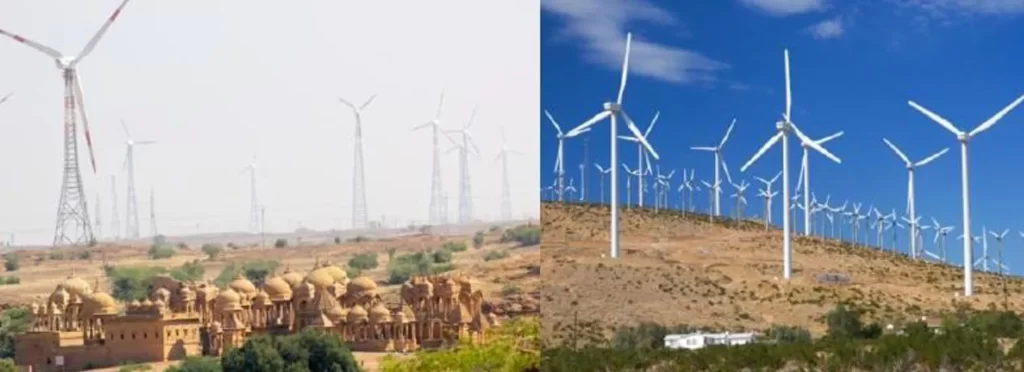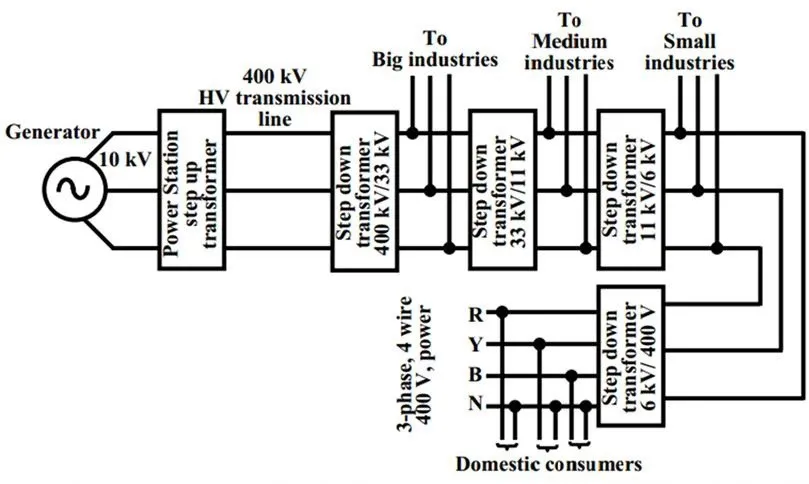If you want to know about the planning of electrical installation or placement of electric equipment in building or layout of substation in building, please click the link.
Electricity production refers to the process of generating electrical power from various sources such as fossil fuels, nuclear energy, renewable energy sources, and more. The production of electricity is a crucial part of modern society, powering homes, businesses, and industries all around the world.
1) Electricity
- Electricity is a flow of electrons around a circuit.
2) Importance of electricity
- Electrical energy (Electricity) has become an essential thing just like food, clothes, air & shelter for us in all walks of our life for various personal comforts (like illumination, fans, air coolers, air conditioners, refrigerators, mixers, grinders, heaters, electric iron, micro wave ovens, toasters, induction heaters, electric cookers etc.), for entertainment ( like computers, TVs, play stations, music players etc.), for various industrial & agricultural functionaries (like pumps, motors, generators, various drives & other machinery) Motive applications like Electric trains, bikes, cars etc.
Electrical energy is the most popular form of energy. We require it in many ways:
- Thermal form-heating application
- Mechanical form-electrical motors/automobiles
- Lighting form-illuminations systems
- Transportation system-?
4) Characteristics of electrical energy
Main reasons of its popularity
- Cleaner Environments for user
- High Efficiency
- Better Controllability
- Simplicity in various usages
- Increasing reliability
- Easier distribution of bulk power, long distance
- transportation of power using overhead transmission or underground cables
- Most versatile devices of energy conservation from electrical to other forms are available for different purposes, such as thermal, illumination, mechanical, sound etc
5) Sources of electric energy
Conventional sources of energy
- The sources of energy which are used in large volumes but are available in limited quantities in the nature and which are going to deplete in near future can’t be renewed are called ‘Conventional (Non Renewable) sources of energy’
- Ex Coal Natural gas oil Water Nuclear fuels
Non conventional sources of energy
- The sources of energy which are abundantly available in nature and that are not going deplete which are renewable are called ‘Non-Conventional (sources of energy’ Ex Solar Wind, Geothermal, Biomass etc.)
6) Basic concept of electricity generation

7) Sources of electrical energy
i) Conventional methods
a) Thermal
- Thermal energy (from fossil fuels) or nuclear energy used for producing steam for turbines which drive the alternators (= rotating A.C. generators).
b) Hydro-electric
- Potential of water stored at higher altitudes is utilized as it is passed through water-turbines which drive the alternators.

- Hydro energy is electricity made using water. Especially since it’s dangerous to mix the two. The water never comes in contact with the electricity. How it works is, water flowing down a river is used to spin turbines inside a generator. Large rivers with fast flowing water work the best.

c) Fossil fuels
- These fossil fuels when burnt releases harmful gases like Co2, Co, So2, No2 etc. & presence of such greenhouse gases in the atmosphere causes global warming which in turn leads to extensive damage to ozone layer, erratic rain fall, unusual heat waves, cyclones, floods etc.
- The ash content of burnt coal when it is disposed in wet or dry forms makes the nearby soils ‘ Infertile ‘ and leads to many health hazards to the nearby residing people who inhales the polluted air & who drinks the polluted air & who drinks the polluted water near thermal power projects.
- (Explain about simhadri plant pollution impact)
Coal power plant
In fossil-fueled steam turbine, the fuel (mainly coal) is burned in a furnace to heat water in a boiler to produce steam.

- The earth is already so disabled by the insidious poison of greenhouse gases, that even if we stop all fossil fuel burning immediately the consequences of what we have already done will last for upcoming 1000 years.
- Each year we are digging out about 400 million tonnes of coal from earth’s crust worldwide and by burning that, thousands of tonnes of Co2, Carbon monooxide, So2 etc. are being thrown into the nature causing serious GLOBAL WARMING whose adverse effects are already being experienced worldwide in many ways.
ii) Non conventional methods
a) Wind power

- High velocities of wind (in some areas) are utilized in driving wind turbines coupled to alternators. Wind power has a main advantage of having zero production cost.
- The cost of the equipment and the limit of generating-unit-rating is suitable for a particular location (= geographically) are the important constraints.
- This method has exclusive advantage of being pollution free and renewable.
- It is available in plentiful quantity, at certain places.
- It suffers from the disadvantages of its availability being uncertain (since dependent on nature) and the control being complex (since wind velocity has wide range of variation, as an input, and the output required is at constant frequency). Single large-power units cannot be planned due to techno-economic considerations.

- Governments are trying to provide relaxation to hydro and thermal sources converts this mechanical energy into electrical energy and with the help of power cables. The energy is then stored in transformers. And then it is transmitted to homes by a channel of electric lines, stepping-down the voltage at every stage till it reaches our homes.
b) Solar energy

- Every year about 5000 trillion KWHr solar radiation is reaching our earth planet. If we can properly utilize this huge amount of solar energy by using Photo voltaic cells/panels, solar water heaters, solar cookers, solar lighting system etc. we can reduce burden on conventional energy resources like coal, water, natural gas etc.

8) Electrical or Power Grid
- According to EA 2003 Act, “grid” means the high voltage backbone system of interconnected transmission lines, sub stations and generating plants
- An electrical grid is an interconnected network for delivering electricity from producers to consumers It consists of generating stations that produce electrical power, high voltage
transmission lines that carry power from distant sources to demand centres, and distribution lines that connect individual customers - Power stations may be located near a fuel source, at a dam site, or to take advantage of renewable energy sources, and are often located away from heavily populated areas They are usually quite large to take advantage of economies of scale The electric power which is generated is stepped up to a higher voltage at which it connects to the electric power transmission network
- The bulk power transmission network will move the power long distances, sometimes across international boundaries, until it reaches its wholesale customer (usually the company that owns the local electric power distribution network)
- On arrival at a substation, the power will be stepped down from a transmission level voltage to a distribution level voltage as it exits the substation, it enters the distribution wiring Finally, upon arrival at the service location, the power is stepped down again from the distribution voltage to the required service voltage(s)
- Electrical grids vary in size from covering a single building through national grids which cover whole countries, to transnational grids which can cross continents



9) National Grid (India)
- The National Grid is the high voltage electric power transmission network in mainland India, connecting power stations and major substations and ensuring that electricity generated anywhere in mainland India can be used to satisfy demand elsewhere
- The National Grid is owned, operated, and maintained by state owned Power Grid Corporation of India
- It is one of the largest operational synchronous grids in the world with 329.23 GW of installed power generation capacity as on 30 June 2017.
10) Objectives underlying the formation of National Grid
- To transfer power from surplus regions to energy deficit regions.
- Utilize maximum resources from diversified regions.
- Ensure reliable, economical and quality power.
The electricity produced by power plants is typically sent to a network of power transmission and distribution lines, which transport the electricity to homes, businesses, and other end-users. Electricity is an essential part of modern life, and its production and distribution are critical to the functioning of society.